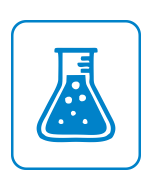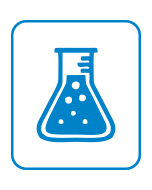Global Cosmetic Colorants Market, Forecast to 2023
Global Cosmetic Colorants Market, Forecast to 2023
Social Media Trends Positively Impact Beauty Awareness in Young Consumers, Thereby Driving the Demand for Novel Cosmetic Colorants
31-Jul-2019
Global
$4,950.00
Special Price $3,712.50 save 25 %
Description
This research study covers the global market for colorants used for cosmetic applications. Colorants in this study cover synthetic and natural dyes and pigments. It also covers specific product trends related to organic pigments, inorganic pigments, and dyes. Moreover, the value chain has been discussed separately for dyes and pigments in the study. The cosmetic applications refer to facial makeup, lip makeup, eye makeup, nail color, and hair color applications.
The cosmetic colorants market is driven by increasing consumer awareness regarding their appearance and the rising per capita expenditure on cosmetic products in the emerging economies. The Asian cosmetics industry has mainly been driven by improved purchasing power and rising fashion consciousness of the population and industry participants spending readily on the promotional activities to increase consumer awareness and develop their products. Improvement and strengthening of the Asian economies over the next few years will also pave the way for the cosmetic colorants market.
However, with the dangers of lead-based products, steps to further phaseout this class of pigments will continue. This situation is expected to affect mostly the developing nations. From 2018 to 2022, there will be a shift toward greater restriction in developing economies. This will be spearheaded by initiates like the World Health Organization’s International Lead Poisoning Prevention Week, which will lead to further market penetration of organic high-performance pigments. These regulatory changes are likely to hamper the market for cosmetic dyes and pigments market during the next few years.
The majority of the color additives used in toiletries are dyes, whereas the majority of those used in color cosmetics are pigments. Hence, pigments held the major share of the cosmetic colorants market. Synthetic colorants normally exhibit brighter, more intense colors than natural ones. The synthetic inorganic ones normally exhibit better stability properties to chemical and physical interactions. Preference for eco-friendly products has additionally cast responsibility on the industry to be more selective and improve the product range with a greater focus on R&D. This would ensure quality and performance colorants to suit the market expectations.
Lip makeup formulations use pigments and dyes, depending upon the desired nature of the end product. For instance, higher concentrations of pigments are used to achieve a glossy effect, whereas dyes are used in higher concentrations to achieve matte effect. Hence, the rising demand for matte lipsticks is likely to boost the cosmetic dyes market during the forecast period. Product innovations in the pearlescent pigments are on the rise as the facial makeup segment demands for a high volume of pearlescent pigments.
Regulatory incentives are likely to be the most efficient method to improve the market in emerging regions. The regulatory incentives are also expected to attract the market entry of newer participants in the natural colorants segment. In this analysis, the global cosmetic colorants market is explored in detail, with emphasis on key growth factors across end-use segments, regional market trends, technology, and product innovations.
Key Issues Addressed
- What is the size of the cosmetic colorants market in terms of revenue and unit shipment? How long will the market continue to grow and at what rate?
- What technology, pricing, product, and regulatory trends are seen in the market?
- What are the drivers and restraints that impact the cosmetic colorants market?
- What are the regional hotspots for growth in the cosmetic colorants market?
- What are the various growth opportunities present in the market?
RESEARCH: INFOGRAPHIC
This infographic presents a brief overview of the research, and highlights the key topics discussed in it.Click image to view it in full size

Table of Contents
Key Findings
Key Findings (continued)
Market Engineering Measurements
CEO’s Perspective
Market Definitions
Market Definitions (continued)
Market Definitions by Product
Market Definitions by Product (continued)
Market Definitions by Product (continued)
Synthetic Versus Natural Cosmetic Colorants
Market Product Blends—Application Matrix
Product and Market Trends
Product and Market Trends (continued)
Product and Market Trends (continued)
Product and Market Trends (continued)
Value Chain for Dyes
Value Chain for Pigments
Value Chain Discussion for Dyes and Pigments
Key Questions this Study will Answer
Market Segmentation
Market Distribution Channels
Market Drivers
Drivers Explained
Drivers Explained (continued)
Drivers Explained (continued)
Drivers Explained (continued)
Market Restraints
Restraints Explained
Restraints Explained (continued)
Restraints Explained (continued)
Restraints Explained (continued)
Regulations—An Overview
Regulations—US
Regulations—Europe and Japan
Market Engineering Measurements
Forecast Assumptions
Revenue Forecast
Unit Shipment Forecast
Revenue and Unit Shipment Forecast Discussion
Pricing Trends and Forecast
Pricing Trends and Forecast Discussion
Percent Revenue Forecast by Region
Global Revenue Hot Spots
Revenue Forecast by Region
Unit Shipment Forecast by Region
Revenue and Unit Shipment Forecast Discussion by Region
Percent Revenue Forecast by Product
Revenue Forecast by Product
Unit Shipment Forecast by Product
Revenue and Unit Shipment Forecast Discussion by Product
Percent Revenue Forecast by Application
Revenue Forecast by Application
Unit Shipment Forecast by Application
Revenue and Unit Shipment Forecast Discussion by Application
Manufacturer Market Share
Manufacturer Market Share Analysis
Competitive Environment
Market Developments
Market Developments (continued)
Market Developments (continued)
SWOT Analysis
Growth Opportunity 1—Key End-use Manufacturers Rely on External Developers Instead of In-house R&D
Growth Opportunity 2—Demand for Natural Products
Growth Opportunity 3—Demand Driven by Changing Consumer Preferences
Strategic Imperatives for Success and Growth
Market Engineering Measurements
Revenue Forecast
Unit Shipment Forecast
Revenue and Unit Shipment Forecast Discussion
Percent Revenue Forecast by Region
Revenue Forecast by Region
Unit Shipment Forecast by Region
Revenue and Unit Shipment Forecast Discussion by Region
Percent Revenue Forecast by Application
Revenue Forecast by Application
Unit Shipment Forecast by Application
Revenue and Unit Shipment Forecast Discussion by Application
Market Engineering Measurements
Inorganic Pigments Versus Organic Pigments
Revenue Forecast
Unit Shipment Forecast
Revenue and Unit Shipment Forecast Discussion
Revenue Forecast by Subproduct
Unit Shipment Forecast by Subproduct
Revenue and Unit Shipment Forecast Discussion by Subproduct
Percent Revenue Forecast by Region
Revenue Forecast by Region
Unit Shipment Forecast by Region
Revenue and Unit Shipment Forecast Discussion by Region
Percent Revenue Forecast by Application
Revenue Forecast by Application
Unit Shipment Forecast by Application
Revenue and Unit Shipment Forecast Discussion by Application
The Last Word—3 Big Predictions
Legal Disclaimer
Market Engineering Methodology
Abbreviations and Acronyms Used
Partial List of Companies in “Others”—Competitive Analysis
List of Exhibits
List of Exhibits (continued)
List of Exhibits (continued)
List of Exhibits (continued)
Popular Topics
Key Issues Addressed
- What is the size of the cosmetic colorants market in terms of revenue and unit shipment? How long will the market continue to grow and at what rate?
- What technology, pricing, product, and regulatory trends are seen in the market?
- What are the drivers and restraints that impact the cosmetic colorants market?
- What are the regional hotspots for growth in the cosmetic colorants market?
- What are the various growth opportunities present in the market?
| No Index | No |
|---|---|
| Podcast | No |
| Author | Prajakta Thorat |
| Industries | Chemicals and Materials |
| WIP Number | K313-01-00-00-00 |
| Is Prebook | No |
| GPS Codes | 9100-A2,9595 |
 USD
USD GBP
GBP CNY
CNY EUR
EUR INR
INR JPY
JPY MYR
MYR ZAR
ZAR KRW
KRW THB
THB




